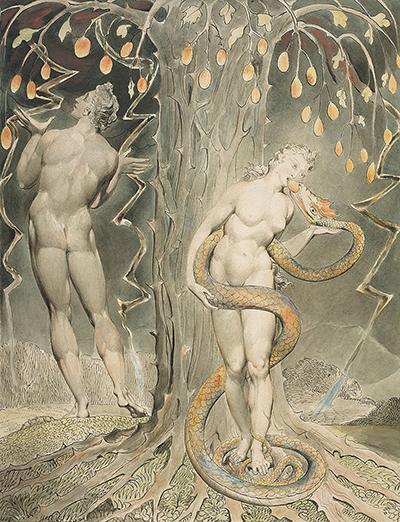Done in 1808, The Temptation and Fall of Eve is a watercolour painting of size 38.7 x49.7 cm. The image has two nude human figures standing beside a tree. A huge snake coils around the woman body and helps her bite a fruit from using its mouth.
The woman's body language shows that she is enjoying the moment as she cradles the snake with her arms and bites the fruit from the serpent’s beak. The image illustrates the Bibles story of Adam and Eve in the Garden of Eden. The tree in the image is the forbidden tree, and the snake represents Satan. Adam is a distance away from Eve and seems not to know what is happening behind him.
The Art style used in this painting is Symbolism. Symbolism focused on suggesting ideas through symbols instead of bluntly depicting reality. Most of the symbolism art style paintings used symbols to suggest reality instead of replicating the natural world in their art. It was an opposing movement towards arts that represented the natural world realistically like Realism and Naturalism. The artists had varying artistic styles and techniques, but, the emphasis on this type of art was on emotions and imaginations. The painting’s current location is at the Museum of Fine Art Boston, USA. Its former owners were Thomas Butts of England (1757-1845), Thomas Butts Junior, J.C Strange and B. Quaritch. The Museum bought the painting with funds donated by contribution.
Blake may have developed a liking for art as a result of the encouragement he got from his family. Blake's started practising drawing by engraving copies of drawings of Greek antiquities that his father bought him. The antiquities exposed him to classical forms in the works of Raphael and Michelangelo, which also inspired his art style. Another contribution to his art's journey is when his parents enrolled him at the Henry Par drawing academy when he was ten years old. His love for poetry also had a contribution in his drawing art as he could add short lyric poems alongside his drawings. Some of his paintings also had scenes influenced by influential poets and writers, such as Alexander Pope, Shakespeare and Geoffrey Chaucer.




